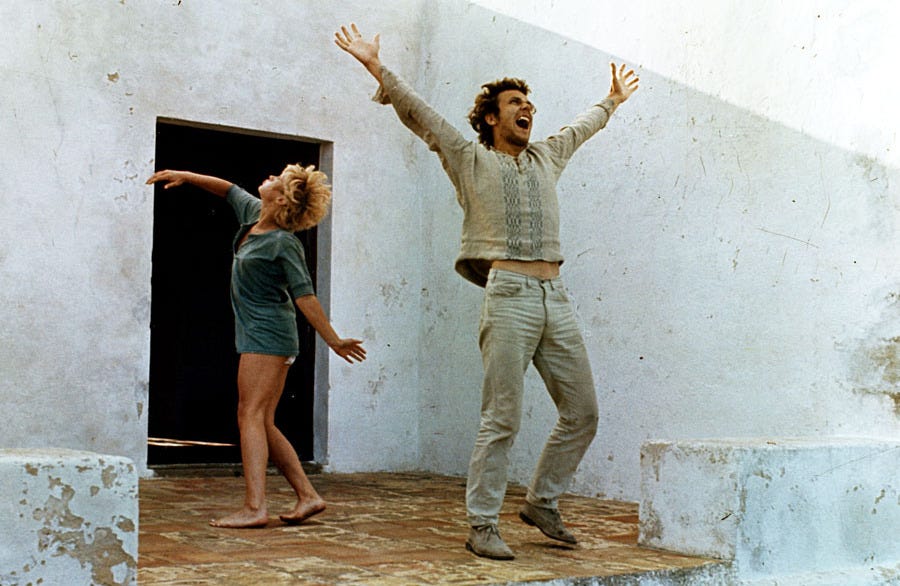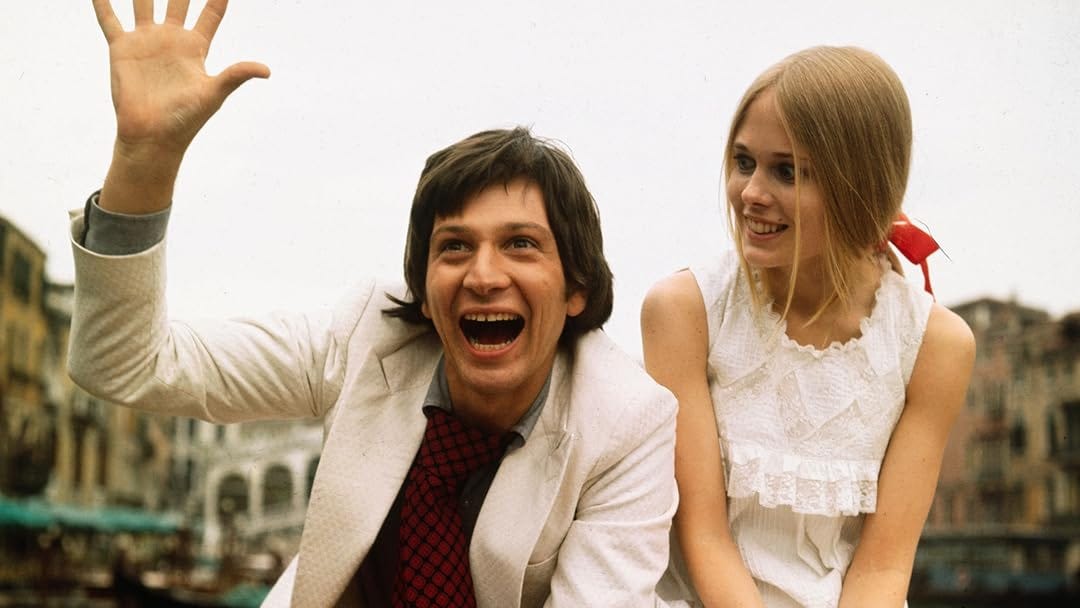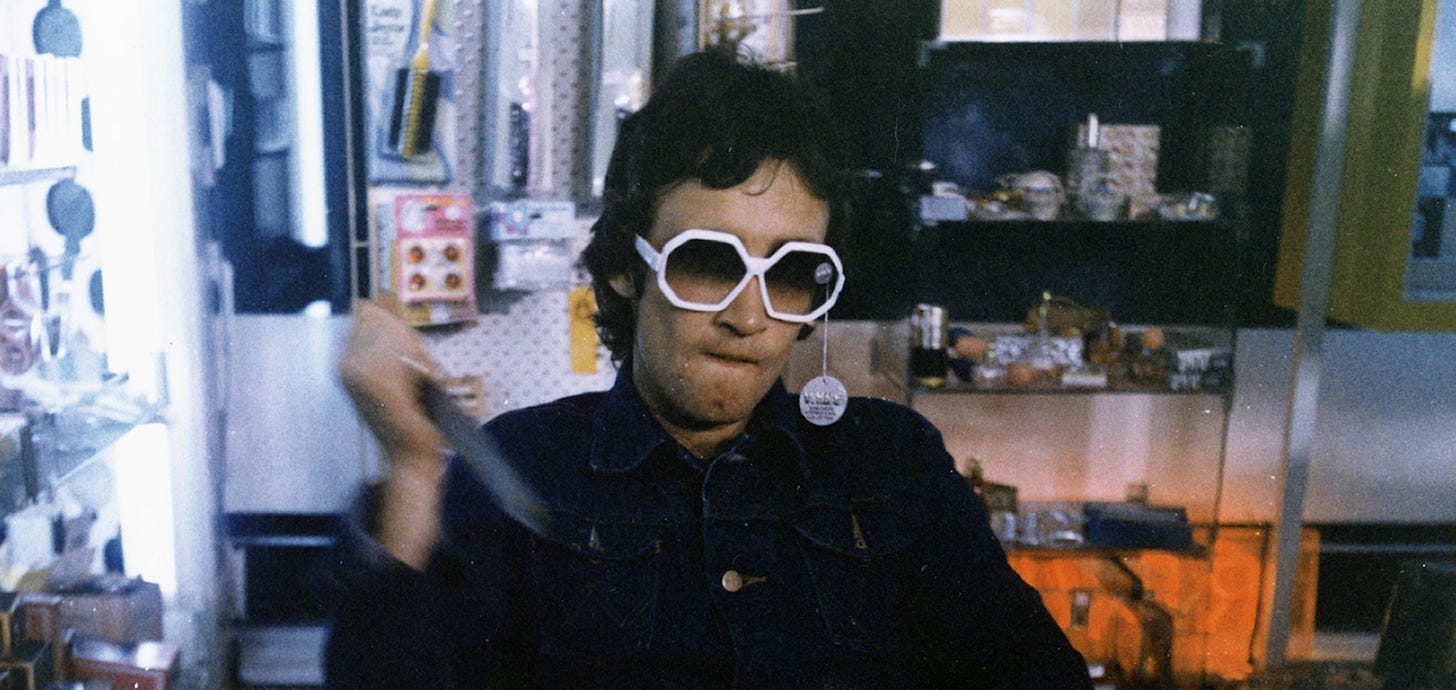marvel ruined mother's day
box-office metrics in the late marvel period // jia zhangke's ecological response to covid // the 5 best heroin movies of the 1960s and '70s
My goal with this newsletter is to write about new films as they reach general release, along with some seasonally appropriate commentary on other cinematic events and interests. This week we’ve got a bit of a grab bag: why the second week of May sucks, some quick thoughts on Jia Zhangke’s Caught by the Tides, and a rundown of the forgotten heroin movies of 1969-1975. This newsletter comes out every Wednesday, which this week means Friday.
Is Mother’s Day the worst movie-release weekend of the year? It’s bleak out there at the multiplexes. The only good news from last weekend was the initial success of Friendship, which opened on six screens and made $451,904, far and away the biggest limited release of 2025 to date. If it had kept that up on as many screens as Thunderbolts* (4,330) it would have earned $326,124,053, making it the second most successful opening weekend of all time. But that didn’t happen. Everyone outside New York and L.A. got to choose from the AI-generated marquee of Clown in a Cornfield, Juliet & Romeo, Shadow Force, and Fight or Flight, and for the most part they didn’t: all of those movies tanked.
Why would a holiday weekend in early summer be this lousy? History provides an answer: between 2007 and 2023, the second weekend of May has been dominated by the second or third weekend of a Marvel movie in every year except 2009 (when Star Trek took out X-Men Origins: Wolverine) and 2014 (when Neighbors beat The Amazing Spider-Man 2).1 2024 seemed like the death of this trend, but in 2025 we're back to business with two number-one weekends for Thunderbolts*. Call the studios cowards for shying off the competition, but they have my entire adult life as evidence that it’s not worth it.
For the most part, the MCU domination caps out after the second week and real movies creep back in for the second half of May. So what can we expect in the weeks to come? This weekend we’ve got a Final Destination lega-sequel and a feature-length promotion for The Weeknd’s new album. The only planned releases for May 20-23 are Mission: Impossible: End Game, Lilo & Stitch Redux, and something called The Face of Jesus. After that it’s The Karate Kid 6. If I got paid to write this newsletter maybe this would all be worth it. This seems like as good opportunity as any to insert a button.

Something interesting that did come out this weekend is Jia Zhangke's Caught by the Tides.2 Created during the pandemic, it weaves together excerpts, background footage, and deleted scenes from Jia's previous films, all starring frequent collaborators Zhao Tao and Li Zhubin. The effect is a surprisingly consistent journey through 21st-century China, accompanied by Zhao and Li as they gradually age from young adulthood to middle age.
This is the only Jia Zhangke film I’ve seen; I don’t think I’d recommend it as an introduction. But even without the context of Jia’s filmography, the experience tugged on my nostalgia triggers. It's a gut-punch to see how much the world has changed in these short 25 years. We start with dance scenes blasting DDR tracks and end in the deep pandemic, pausing from time to time to marvel at the gradual invention of artificial intelligence. Zhao's character is fascinated by the advances in robotics, capturing a barely remembered hope from the early millennial years when technology felt like the future and not the worst component of the present. A scene when she finally meets a helper bot whose facial-recognition programming churns out semi-meaningless platitudes is heartbreaking. Even sadder is a scene when Li, now a grey-haired older man, suffers the indignity of using a QR code to get into a building. How can we do this to old people? Forcing anyone over 60 to use a smartphone app should be categorized as elder abuse.
I have no prior emotions tied to Jia's work, I’m not very familiar with Chinese cinema, and I honestly don’t know anything about China in general - so I’m not going to waste your time trying to come up with a take on this movie. If you're a fan of Jia’s work, seek it out. If you aren’t, you can at least appreciate the existence of this film. We’re still getting around to some of the most creative responses to pandemic restrictions: Grand Theft Hamlet, Grand Tour, now this. I don't adore the results of any of them. We make better art when we're able to move around and talk to people. But Jia's willingness to work with what he's got strikes me as a fascinating, almost ecological response to a global crisis that created - and continues to create - so much disposable waste. Why fight against an impossible current to create something new when you can chip through the trash you’ve already collected? You might find something spectacular. Or at the very least there’s meaning to be made out of the bits you’ve chosen to toss.
Meanwhile, I’ve been biding my time waiting for Final Destination by working on an assignment about heroin movies. I sort of regret pitching this topic because it’s been a real bummer to research. I was fascinated by heroin as a young person because the musicians who did it had great bone structure and frowned a lot. As an adult I’m more inclined to notice that it also involves a lot of abscesses and vomiting and dying, none of which made it into Jesus and Mary Chain videos. I’ll have something coherent to say about all of this in the finished essay, but I want to highlight some less-watched heroin movies from the late ‘60s and early ‘70s that aren’t going to make it into the final draft. Most people think about weed, LSD, and maybe coke from those years, so watching through the contemporary treatments of heroin has been fascinating to watch. These movies are unpleasant and often kind of bad, but if you want to examine an edgier version of this high point of civilization, here’s a starter pack.
Barbet Schroeder, More (1969). A psychedelic movie (complete with original Pink Floyd soundtrack) about hippies on Ibiza, which seems like it was already an annoying place before the invention of ecstasy and Balearic Beat. The two main characters are obnoxious, unsympathetic and self-obsessed. When they finally get into heroin it’s hard to root for them to clean back up. The smugness and faux-intellectualism that Mimsy Farmer brings to her femme-fatale junkie performance is unbearable. Klaus Grünberg’s Werner Herzog-style German robot commentary is even worse. Schroeder saves his best cinematography for the acid trips and pretty quickly dives into grime and shadows once everyone gets hooked on junk. A Woodstock-to-Altamont film created as the history unfolded, More is an unpleasant but occasionally mesmerizing portrait of a late 1960s that knows that the party is pretty much over.
Paul Morrissey, Trash (1970). A nasty transitional document from the Warhol Factory that sneers at the idea that peace and love were ever a real thing. The only hippie iconography left over is a peace symbol pin on the lapel of a smarmy social worker who, after failing to convince two junkies that they’re ineligible of welfare, leaves the house screaming slurs at them. Everyone in this film, from Joe Dallesandro’s addict who can’t get hard to Andrea Feldman’s rich girl who just wants to watch someone shoot up, is disgusting, their rot driven home all the more effectively by the fact that they’re gorgeous. Like everything Andy Warhol ever did, this movie seems to come from a place of deep cynicism - and yet, it’s so funny and honest that it almost comes across as an act of love. When a pregnancy-faking Holly Woodlawn whines “I’m entitled to it!” as she fights for welfare entitlements, she’s coded as hopelessly selfish - but you can’t help but think that she’s got a point.
Jerry Schatzberg, The Panic in Needle Park (1971). Did this movie invent the hoodie? Stallone gets credit for popularizing it in Rocky, but Pacino has him beat by five years. In structure as much as style, The Panic in Needle Park sets the mold for everything to come: counter-cultural art girl falls for her boyfriend’s dealer, tries out his drugs to fit in with his friends, and eventually gets hooked worse than he does. Today it’s an after-school-special narrative, but in 1971 it was novel.3 The question you have to ask is, why would a girl like Helen fall for a loser like Bobby? The answer is that 30-year-old Al Pacino is what they call a “snack.” The end of this movie is deeply depressing, but the only thing going through my mind was how beautiful this man was with his hood up. I guess that’s maybe the point.
Noel Black, Jennifer on my Mind (1971). In many ways a lousy remake of More (the titular Jennifer shouts, “more!”). The rich girl is the junkie and the (also rich) guy is obsessed with her. They start on pot, escalate to hash, and eventually end up on dope. He doesn’t really seem the type, and mostly we wonder why he’s so captivated by a girl who doesn’t give a lick about him. Eventually she overdoses in his apartment and he has to dispose of the body (this is a flashback movie, so this isn’t a spoiler - but you would know what was coming even if it wasn’t). Oddly, the filmmakers appear to have no idea how opioids impact the human body: every time Jennifer shoots up she performs an acrobatic feat and ends up on the roof. It’s hard to believe that this movie had much of an impact on anything at all, but I believe it provides the first junkie Pietà shot, an image that will become central iconography for the next 50 years of drug movies.
Bert Deling, Pure Shit (1975). Fueled by Australian New Wave energy, this 24-hours-to-score movie emphasizes friends over romance and presents the case that maybe being a junkie is a pretty fun time. Between the manic cameras and the choppy editing and the incomprehensible accents, it’s hard to know what’s going on. This seems like a clear reference point for Danny Boyle; he figured out how to incorporate pathos and style, but the rawness of Pure Shit captures the nastiness and the all-consuming appeal of addiction that centers Trainspotting. It starts out with an overdose and goes nowhere, 90 meaningless minutes with a conclusion that tells us that the binge has only just begun. It’s fun while it lasts - but it sure isn’t going to last.
These movies make me hate the cultural revolution, which was maybe their crypto-conservative point. If LSD is film semiotics for all-one unity, coke for productivity, and weed for peace, heroin means selfishness, the willingness to destroy one’s body and one’s community for the pursuit of self-pleasure. It’s the drug of choice for the Tom Wolfe/Christopher Lasch “me generation” read of the 1970s. You can’t make a socially responsible pro-opioid argument, and to use heroin as an analogue for culture is to call culture rotten at its core. I don’t think it’s useful to represent generations in broad swaths any more than it would be accurate to say that everyone between 1969 and and 1975 was whacked out on junk. But it’s an interesting counter-narrative to our rosy-eyed vision of this era to watch reports from the counterculture that are fairly disgusted with everything that’s going on around them. I don’t know if I would have survived the ‘60s, but there’s a good chance I would have come out of the ‘70s a Republican. Thank God I held out until the ‘90s.
Thanks for reading *life is disappointing.* If you found this newsletter slightly less disappointing than the rest of your life, consider liking, commenting, pledging me money (thanks!), or subscribing. Subscribing will get you exactly what you get here but sent to your email inbox. I’ll be back to normal reporting next week, probably with a deep-ish dive into the video career of The Weeknd and why that earns him the right to force a feature-length film on us.
I’m not including the pandemic years, in which The Wretched (2020) and Demon Slayer: Kimetsu no Yalba - The Movie: Mugen Train and Wrath of Man (2021) took the prize. I recommend committing this information to memory; it will come in really useful someday.
Only in New York, but gradually expanding over the next couple weeks. I saw it earlier this year at MSPIFF.
Go Ask Alice, the real moral-panic ur-text of 1971, came out three months later.







